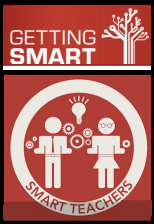To access the most current resources, please click on the tab at the top of this blog:
Digital Differentiation - Current
Updating
Ten months ago I published a Digital Differentiation model on this blog. I've been using the model to guide the work I do each day and I've been sharing it via webinars and hands-on training sessions.
Of course, ten months is a long time in the world of edtech, and I've added some new tools and resources to my personal teaching toolkit, so I decided it was time to update the model and tweak it just a bit. The original article and interactive graphic can still be found on this blog. Here is the new post:
Technology is a tool that can be used to help teachers facilitate learning experiences that address the diverse learning needs of all students and help them develop 21st Century Skills, an idea supported by the Common Core.
At it's most basic level, digital tools can be used to help students find, understand and use information. When combined with student-driven learning experiences fueled by Essential Questions offering flexible learning paths, it can be the ticket to success. Here is a closer look at three components of effectively using technology as a tool for digital differentiation.
The goal is to design student-driven learning experiences that are fueled by standards-based Essential Questions and facilitated by digital tools to provide students with flexible learning paths.
3 Components:
 |
Essential Questions
Student-driven learning experiences should be driven by standards-based Essential Questions. These questions should be open-ended to allow for flexible learning paths. Devise question by looking at the standards that determine what we teach.
Click on the tiny circles in the graphic for more information.
Click on the tiny circles in the graphic for more information.

Flexible Learning Paths
Use digital tools to provide students with flexible learning paths to meet their unique learning styles.
Teacher as Facilitator
The role of the teacher shifts to facilitate student-driven learning experiences. This new role allows teachers to maximize instructional time because the classroom structure provides opportunities for frequent interaction with individual students for assessment, modification, reteaching and enrichment.

----------------------------------














8 comments
This is brilliant!
ReplyThanks. Shared with 'Enjoyable School Year' community.
ReplyThanks for considering tech. strategies for Students with varying learning styles.
ReplyHi.
ReplyLooks great.
Your sliderocket videos/links aren't working.
You are correct, the SlideRocket links no longer work because SlideRocket no longer supports accounts for individuals, you need to purchase a subscription for an organization. This version of the graphic was created in December of 2012. I have updated it since then. The new model can be found here: http://d97cooltools.blogspot.com/p/flexible-learning-paths.html
ReplyHi Susan,
ReplyYour digital differentiation concept and how you have explained it has helped to clarify some grey areas. I am currently working on a curriculum committee for my county to bring coding to our 6th graders. Do I have permission to use your term digital differentiation in our framework when writing about meeting the needs of all learners? Thanks!
Hi Roberta,
ReplyThe term Digital Differentiation did not originate from me. In fact, when I created my first Digital Differentiation Model there the terms was in use, indicating this was a catch phrase.
If you use my resources, please use the most current and updated model, found through a tab at the top of my blog, or here:
http://d97cooltools.blogspot.com/p/digital-differentiation.html
Web tools change and I continue to create new and updated models.
Thanks! Susan